Beyond Seafood: Discovering the Wonders of Capiz
Located in the Western Visayas region, Capiz is a province that boasts not only its delectable seafood cuisine but also a rich history and natural beauty waiting to be explored. The province is situated on Panay Island, which is known for its pristine beaches, crystal-clear waters, and abundant marine life.
The Seafood Capital of the Philippines
Capiz is home to a diverse range of seafood delicacies and other delicious seafood. It is the land where one can taste the most scrumptious aquatic cuisine in the country. From succulent oysters and delectable shrimps to mouth-watering crabs, the province has a wide variety of crustacean menus that are always fresh and abundant.
That said, the province has earned its moniker as the “Seafood Capital of the Philippines” for its marine wealth and vibrant fishing industry.
Rich Culture

Contrary to popular belief, there is more to Capiz than just being the seafood capital of the Philippines. It offers more than just a culinary adventure.
The province boasts a rich history that dates back to the Spanish colonial era, with heritage sites like the Santa Monica Church and the Panublion Museum showcasing its colorful past.
One can also visit the Capiz Provincial Park and Roxas City Plaza, where a statue of the province’s most famous son and the first President of the third Philippine Republic, Manuel Roxas, along with seven other heritage and cultural landmarks can be seen.
A Beautiful Island Waiting to be Explored
For nature lovers, too, Capiz is a paradise waiting to be explored, making it one of the most relaxing places to retreat in Western Visayas. The province is home to the Suhoton Cave, a natural wonder with stunning rock formations and an underground river.
Tourists can also visit the Mantalinga Island, a small island with crystal-clear waters, perfect for snorkeling and diving and the Culajao Mangrove Eco Park in Roxas City where 19 varieties of mangroves serve as home to a variety of birds, mollusks, and insects.
Baybay beach also boasts fine, ebony sand facing the Sibuyan Sea. Pilar Cave has also been rated as one of the top 10 must explore caves and caverns in the Island of Panay. The longest River on Panay Island, the Panay River is also a main attraction in the island. The source of this river is on the slopes of Mount Igabon and Mount Angas Mountain range. The river splits in Panay with the main branch cascading into the Sibuyan Sea.
History and Heritage
The City of Roxas and the Panay Island in general is not just about tourist attractions but is home to some of the oldest national historical landmark, churches, as well as heritage sites in the country. The long list includes The Sacred Heart of Jesus or the Jesus Christ Shrine, the Museo de Santa Monica, Casa de Mercado, and Panay Church. Even the Roxas City Hall where the Roxas city government holds office speaks history.
Santa Monica Church
The Baroque style historical Santa Monica Church features an astounding life-like statue that offers great views of Roxas City. It is a pilgrimage site visited often especially during the Holy Week.
Roxas Cathedral
The Roxas Cathedral built in 1827 is in the historic center of the city, with the city plaza at its front, opposite the Panay River and Capiz Bridge.
Blessed Virgin Mary Cathedral
Under the title of Immaculate Conception is Roxas City’s The Blessed Virgin Mary Cathedral. Founded by Augustinian missionaries in 1707, it is considered one of the oldest landmarks in the Panay Island.
This locals’ guide to Capiz tourist destinations will give you the right amount of excitement to pack your bags and explore the wonders of this beautiful province.
Alcatraz Ruins
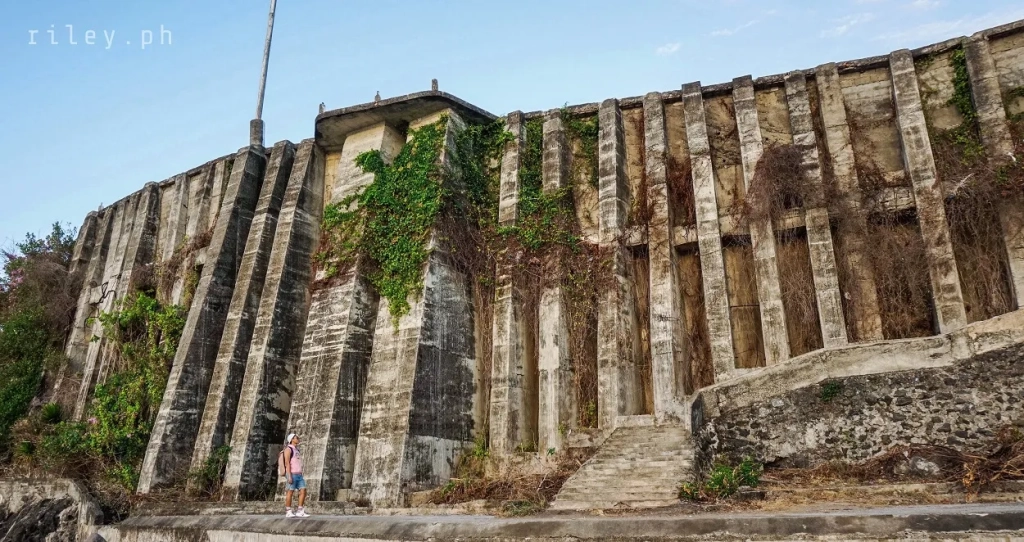
Located in Brgy. Culasi, Roxas City, the Alcatraz Ruins stand as a renowned and captivating destination characterized by its expansive structure, featuring sides that function as dead-ends.
Beyond its architectural charm, the Alcatraz Ruins gift visitors with an awe-inspiring panorama of the sea, crashing waves, and pristine seashore, offering a serene haven for relaxation and rejuvenation.
This idyllic spot serves as a haven for those with a penchant for fishing and anyone seeking solace and tranquility away from the frenetic pace of city life.
The Alcatraz Ruins invite you to take a break from the relentless demands of the city, offering a space where you can reconnect with the serenity of the natural world while savoring the breathtaking vista of the boundless sea.
Long Coast of Baybay
Along the Baybay Beach in Roxas City, you can find a wide variety of fresh seafood. Locals and tourists alike visit the coast to try and purchase the tasty array of dried fish, one of the most popular delicacies in the area.
While it may cost more than your regular dried fish staple, the unique and delicious flavor will surely be worth every peso you spend. The locals take pride in their carefully crafted dried fish with palate quality that does not disappoint.
But the coast of Baybay has much more to offer than just dried fish. The stunning views of the ocean and white sandy beaches are breathtaking. It’s the perfect place to relax and unwind, with the waves gently lapping at the shore.
The vibrant and lively atmosphere will surely leave you feeling energized and refreshed.
So, whether you’re a foodie looking for a unique gastronomic experience or just looking to soak up the sun and enjoy the beautiful scenery, the coast of Baybay in Roxas City is worth a visit.
Mantalinga and Olotayan Island

If you’re planning to visit Roxas City, take the chance to explore the beautiful Mantalinga and Olotayan Islands. These iconic islands offer a great island hopping experience you wouldn’t want to miss.
As your plane descends towards Roxas City Domestic Airport, you can glimpse the beautiful islands from above. On a clear day, the islands look calm and serene.
When you’re on the road or food-tripping at Bay-bay Beach, you’ll have the perfect opportunity to see these islands up close. From the beach, you can see the islands, almost as if they’re within your reach.
Both Mantalinga and Olotayan offer a variety of activities that cater to all kinds of travelers. From swimming, snorkeling, and diving to island hopping tours, you’ll never run out of things to do.
The Punta Cogon
Venturing toward the Northeastern expanse of Roxas City, one encounters the captivating allure of Punta Cogon.
This coastal hamlet nestled within the city’s embrace is a picturesque destination where the immense waves passionately collide with the shoreline, serenading visitors with their melodious plashing, all set against the backdrop of a lush coconut tree-lined coast.
Punta Cogon beckons you to a serene and authentic slice of coastal life, where the gentle sea breeze carries a sense of timelessness and tranquility.
This inviting village extends its warm embrace to visitors, offering an opportunity to immerse themselves in the culture and rhythms of the local community.
The heart of Punta Cogon beats with the rhythm of the sea, as its resilient and resourceful residents have historically relied on fishing as their primary means of sustenance.
This deep connection with the ocean is palpable in the warm smiles and hearty welcomes you’ll receive from the locals, who are more than willing to share their way of life with you.
Your visit to Punta Cogon is not just an exploration of natural beauty but also a chance to connect with the resilient spirits of those who call this coastal haven home.
You can walk along the sandy shores, engage in conversations with the fishermen about their daily catch, or simply bask in the unspoiled simplicity of a place where the sea’s eternal embrace provides sustenance and a way of life.
The Basiao Beach
Just beyond the bustling heart of Roxas City lies the pristine oasis of Basiao Beach, a sanctuary of natural beauty and tranquility that beckons to those searching for the perfect seaside escape.
The most striking feature of Basiao Beach is its seamless connection between land and sea. As you stroll along the shore, you’ll discover that it seamlessly transitions into a vast terrain adorned with an elevated area that perfectly complements the surrounding aquatic expanse.
This delightful fusion of land and water creates an enchanting setting that’s both aesthetically pleasing and tranquil.
Conveniently, Basiao Beach is just a short 20-30 minute land journey from the city center, making it easily accessible for locals and tourists. The welcoming residents of Basiao add to the charm with their warm hospitality and a hint of retro-ambiance that harks back to simpler times.
For those who appreciate a bit of adventure, you can take a stroll from the seashore of Basiao Beach (or use your private vehicle) to ascend the hill.
At the pinnacle, you’ll be rewarded with a mesmerizing panoramic view of Basiao’s lagoon beach, an unspoiled jewel that sparkles under the sun’s warm embrace.
Basiao is conveniently situated just 10-15 minutes away from Camella Capiz, a Spanish-inspired residential community offering a variety of house and lot options in Roxas City. It’s worth noting that Basiao is part of the municipality of Ivisan, a locale renowned for its abundance of oysters, seashells, and other delectable seafood.
When you visit the Talipapa centers or the central market, you’ll be greeted by vendors who offer their products and extend their welcoming smiles, making your visit a wholesome and memorable experience.
Panay Bell (Santa Monica Parish Church)
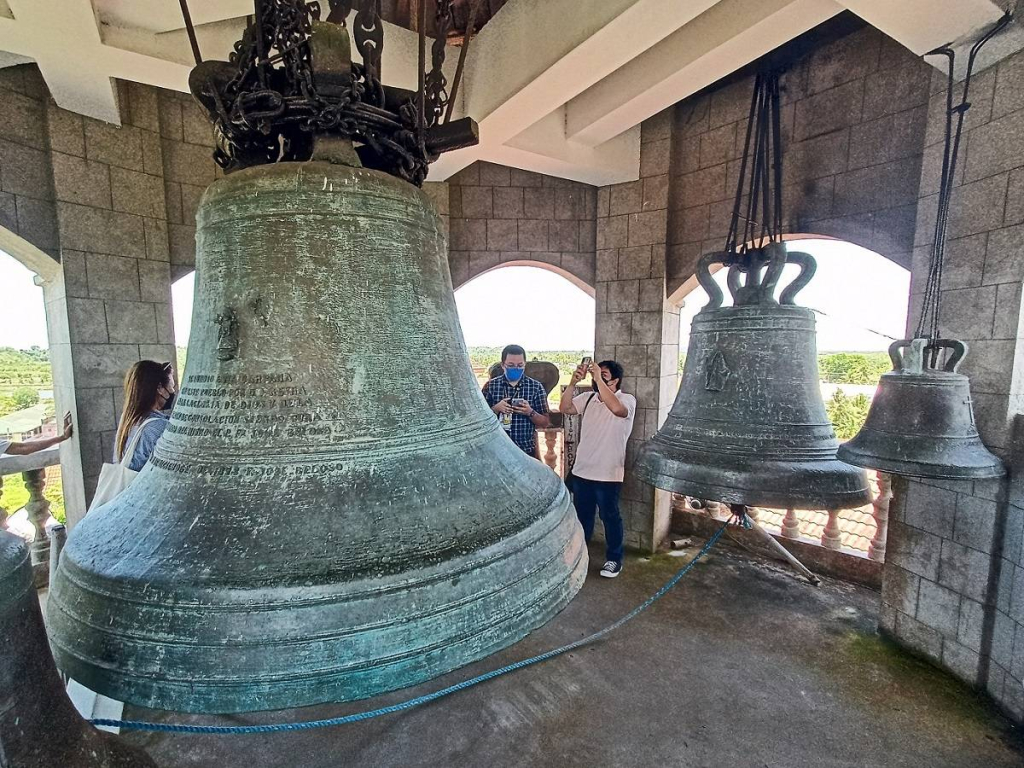
Leaving behind the serene beauty of Basiao Beach, we embark on a journey to Panay, Capiz, a place with a significant historical and cultural treasure.
Here, you’ll discover Southeast Asia’s largest and most venerable ancient bell, an awe-inspiring relic that resonates with the echoes of centuries past.
Beyond the sheer grandeur of this historical artifact, Panay offers an immersive journey through time, allowing you to witness the echoes of the Spanish colonization era.
As you stroll through the streets, you’ll find yourself transported to a time when cobblestone streets were bustling with life, and the Spanish influence left an indelible mark on the local culture.
Panay’s vibrant community is a delightful destination for those who consider themselves street food connoisseurs. The area is adorned with kiosks and stalls offering various delectable local delicacies.
From savory barbecue skewers to mouthwatering pastries, you’ll be spoiled for choice as you savor the flavors that make Panay’s street food scene a gastronomic adventure.
Panublion Museum
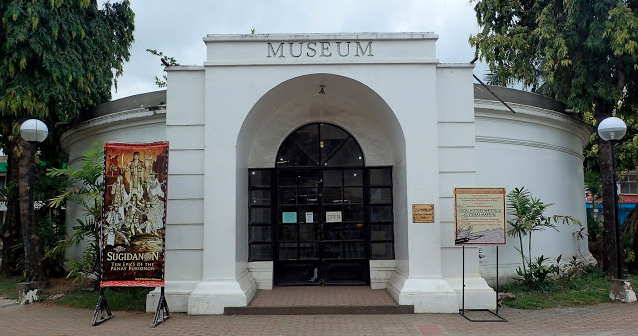
Panublion Museum, also known as The Roxas City Museum, takes its name from the Hiligaynon term for “guardian of precious things.” The museum is housed in a unique whitewashed building that was once a circular water tank.
This is an excellent example of intelligent architectural reuse, and the circular shape of the building adds to its visual appeal.
The history of the building is fascinating. In 1910, President Pastor Alcazar constructed the water tank near the “municipio” to provide water to the people of Capiz during the dry months. The tank, which is 11.5 meters in diameter and 6.10 meters in height, has walls that are 27.5 cm thick.
During World War II, the municipio was destroyed, but the water tank was spared. After the war, offices were built around the tank, completely hiding it from view. It wasn’t until 1993 that the offices were demolished, and the water tank was seen again.
The aging water tank possessed a commanding presence, reminiscent of a mature and dignified lady – resolute and graceful. To dismantle it felt akin to severing ties with history. As time passed, however, the water tank ran out of purpose due to Roxas City’s modernized water infrastructure.
The city’s administration and its inhabitants collectively conceived the notion of transforming it into a museum, ultimately bringing the Roxas City Museum, known as Ang Panublion, into existence.
Today, the museum showcases the rich history and culture of Capiz, featuring exhibits on everything from the province’s natural wonders to its indigenous crafts and traditions. A visit to Panublion Museum is a must for anyone interested in the heritage of this vibrant and diverse region.
Pontevedra Capiz
Our next destination leads us to the charming municipality of Pontevedra, Capiz, a place renowned for its delectable culinary treasures and much more.
Pontevedra holds a special place in the hearts of seafood enthusiasts, as it is celebrated for its mouthwatering Class A tiger prawns, affectionately known as “lukon” in the local dialect. As you savor these succulent prawns, you’ll quickly understand why they are considered a delicacy in the region.
However, Pontevedra’s seafood bounty extends far beyond the prized tiger prawns. The waters surrounding this picturesque municipality teem with crabs and king crabs, providing a diverse range of delectable options for seafood lovers.
The locals have harnessed this maritime abundance and transformed it into a thriving industry. Some enterprising businessmen have even tapped into international markets, exporting their seafood to countries like Taiwan, Singapore, and Korea, where these delicacies enjoy high demand.
Tiger prawns, crabs, and king crabs from Pontevedra are celebrated for their exceptional taste and unique flavor profiles that captivate palates worldwide.
Apart from its culinary treasures, Pontevedra is one of the most economically prosperous municipalities among the 16 that makeup Capiz.
The municipality boasts a thriving education sector, with three private schools and a State University providing opportunities for local and visiting students to expand their horizons.
Moreover, Pontevedra is dotted with native coffee shops that offer a laid-back ambiance, allowing you to savor the local culture and perhaps even strike up a conversation with friendly locals while enjoying a cup of aromatic coffee.
It’s an opportunity to experience the warmth and hospitality of the community while indulging in the soothing rituals of coffee culture.
Pilar Capiz
Pilar, Capiz, stands as a natural wonderland, a place where the beauty of nature unfolds in myriad forms – from pristine beaches to majestic mountains, cascading waterfalls, and mysterious caves.
If you’re eager to explore Pilar, an ideal starting point is cave hopping. The ancient caves here are like chapters in a history book, each telling its unique story through the relics unearthed on the site.
As you delve into these caverns, you’ll discover remnants of the past, such as pots adorned with intricately incised designs. These relics provide glimpses into the lives of the people who once sought shelter in these subterranean realms.
The ancient caves in Pilar are believed to have served as burial sites for pre-Spanish Filipinos, and the relics within them offer a profound connection to this bygone era.
Locals will passionately tell you that a visit to Pilar is incomplete without exploring and paying homage to these sacred caves, which hold the secrets of history within their darkened chambers.
Aside from caves, Pilar’s beaches are also perfect for an outing. Here, the beaches are clean, and if you fancy mountain climbing or trekking, you can also do it in Pilar, Capiz. And guess what? You can refresh in the river or waterfall up in the mountain after your exhausting trekking.
Cultural Heritage and Landmarks in Roxas City Plaza
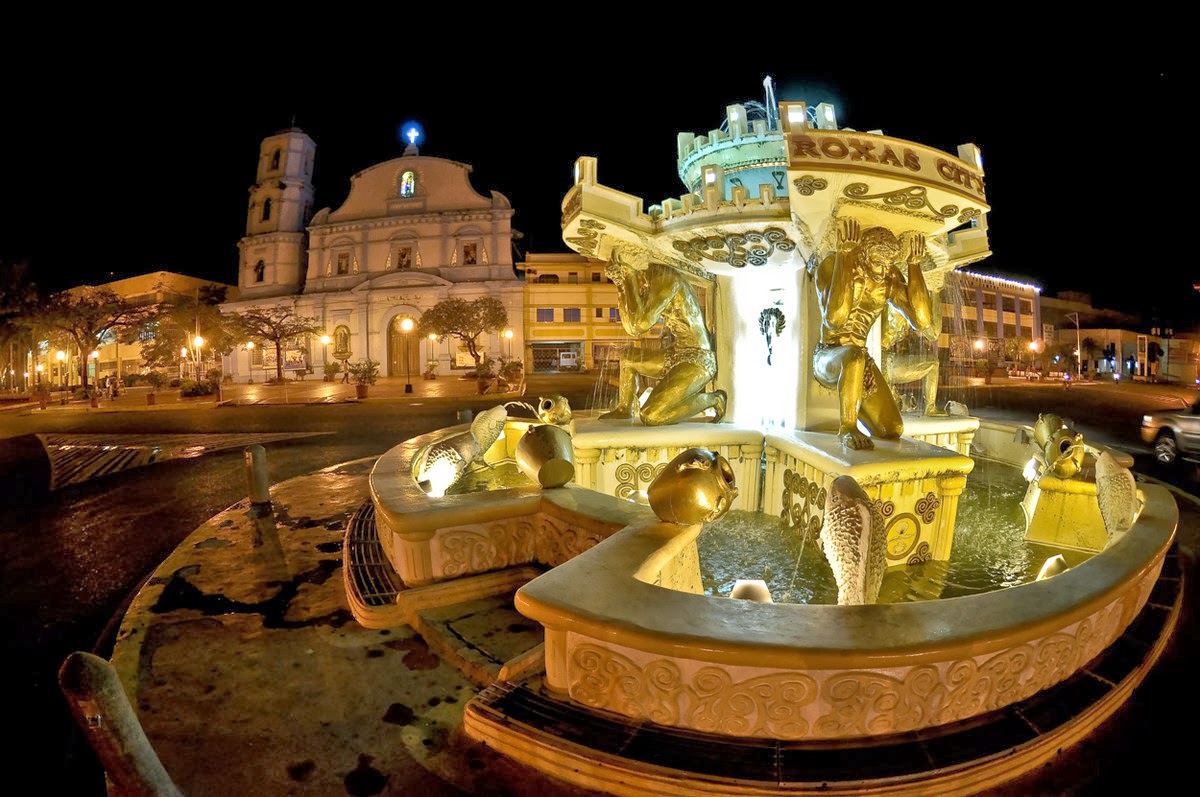
Roxas City Plaza is a cultural and historical landmark at the heart of Roxas City. Spanning over 1.5 hectares, it is a vast open space that boasts eight heritage monuments, landmarks, and structures.
This number is more than what you would typically find in a plaza in the Philippines today.
The Immaculate Conception Metropolitan Cathedral, now called the Roxas Cathedral, is the most ancient of these landmarks, serving as the city’s religious center and its parish since the early 1700s.
The current church was completed in 1877 and stands a magnificent structure often visited by tourists and locals.
The Capiz Provincial Capitol Complex is another well-conserved landmark, built in 1915 with a modern and simplified interpretation of Spanish-Filipino architecture of the 19th century. The Rizal monument is set on a tall plinth in the forecourt of the capitol.
The Capiz Bridge, better known as the Roxas City Bridge today, is the third landmark and connects the city to the main highway leading south. The refined bridge harmonizes with the unpolluted river, flanked on both sides by revetments adorned with vibrant bougainvillea.
In the heart of the spacious area of the plaza stands the Roxas City Fountain and Rotunda, constituting the fourth significant feature of the location. Historical records indicate that the construction of the fountain took place around 1925.
This is designated as “kilometer zero” for Capiz, serving as the reference point for all destinations within the province.
The gazebo, a neo-classic masterpiece designed by architect Jose Roldan in the 1920s, and the President Manuel Roxas monument are the sixth and seventh landmarks of the plaza.
Looking for a home close to these spots?
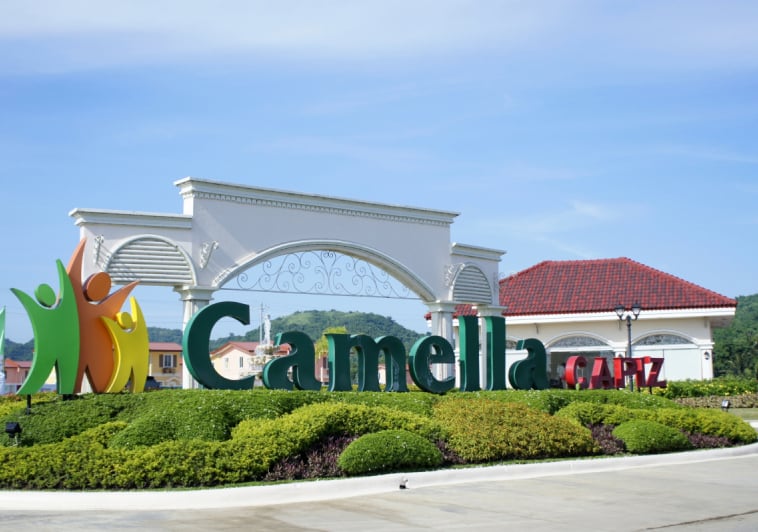
Camella Capiz
Camella Capiz is strategically located at Brgy. Sibaguan, Roxas City. The master-planned community is the first and only nationally developed housing project offering house and lot for sale in Capiz. Camella Capiz is along the main road, making it very accessible.
Aside from the previously mentioned tourist spots, Camella Capiz is just 5 to 10 minutes away from malls and markets. It is also 15 to 25 minutes travel from the Roxas airport and under 25 minutes away from the seaport and Baybay beach.
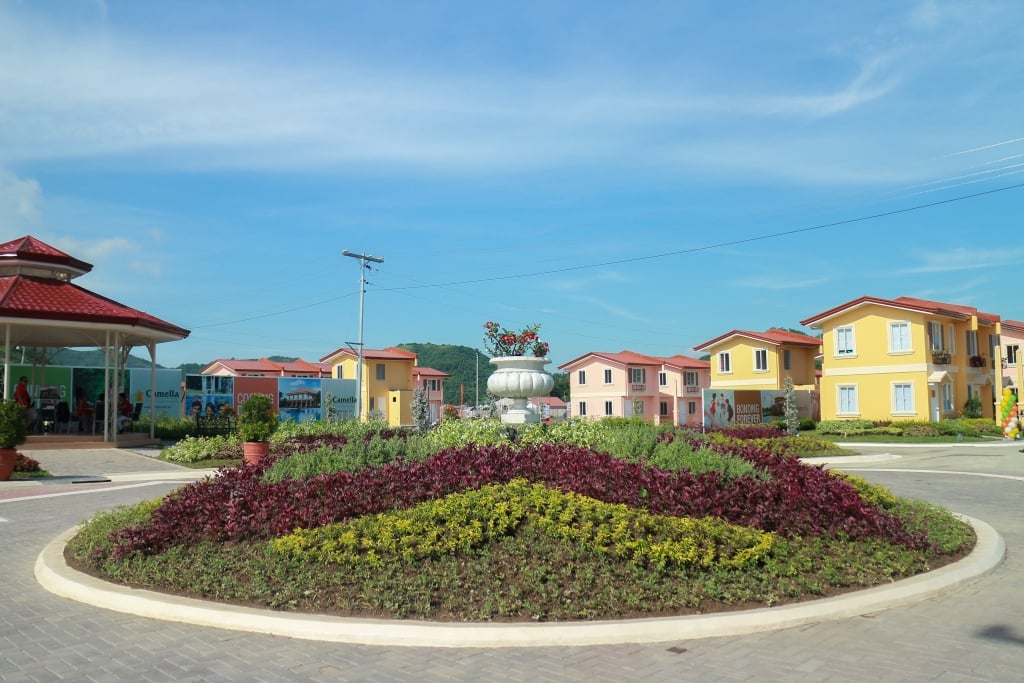
Suppose you are looking for a permanent place near a bustling neighborhood where you can find almost everything you need. In that case, Camella Capiz is here to offer your dream home. Tuck in a safe and secure community—you deserve a peaceful life ahead.
So what are you waiting for? Dali Na Diri! Check out Camella’s catalog of house and lot for sale in Capiz and know more about this master-planned community.
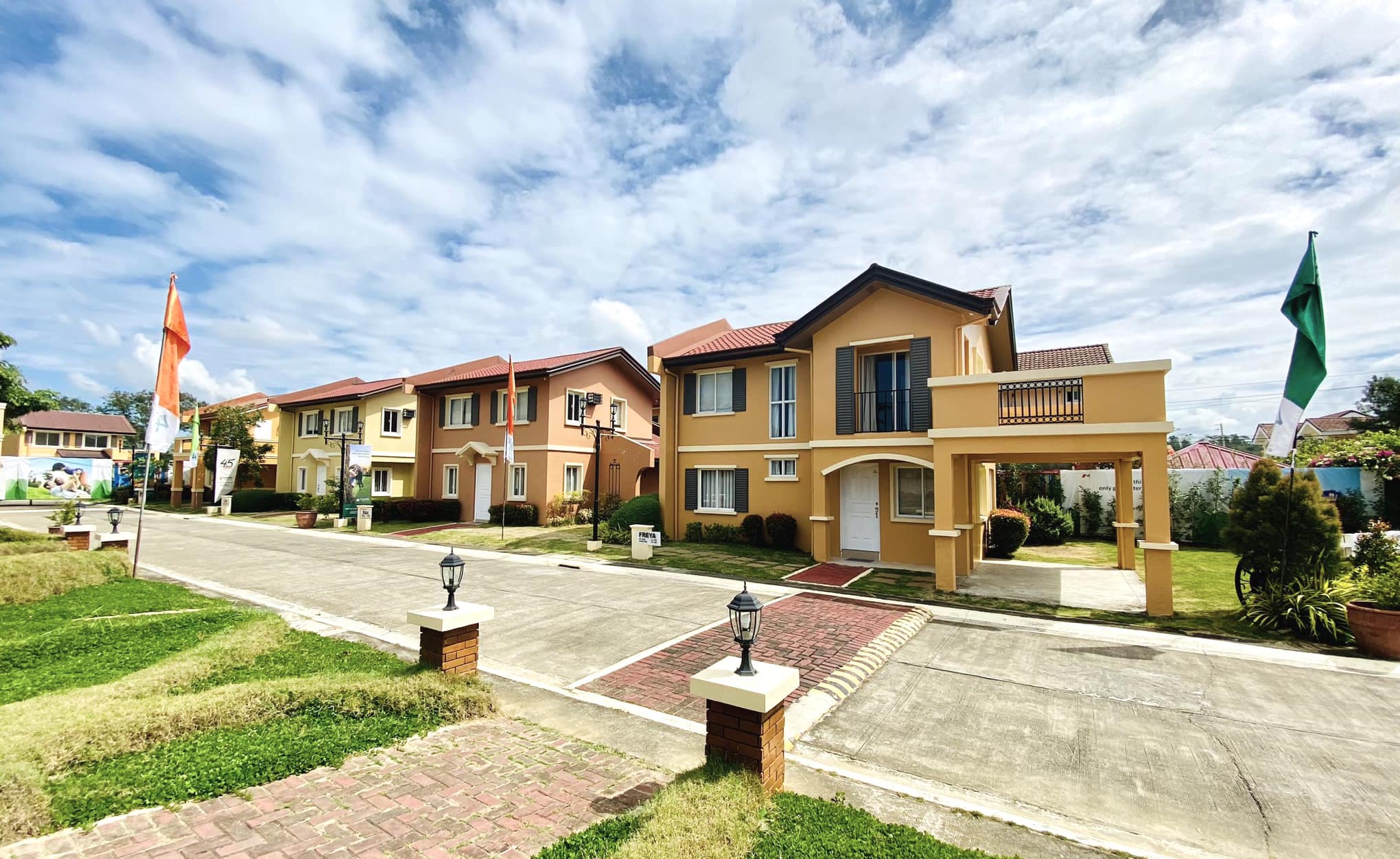
Check out our House and Lot for Sale Properties
Discover our house and lot for sale properties in the Philippines


